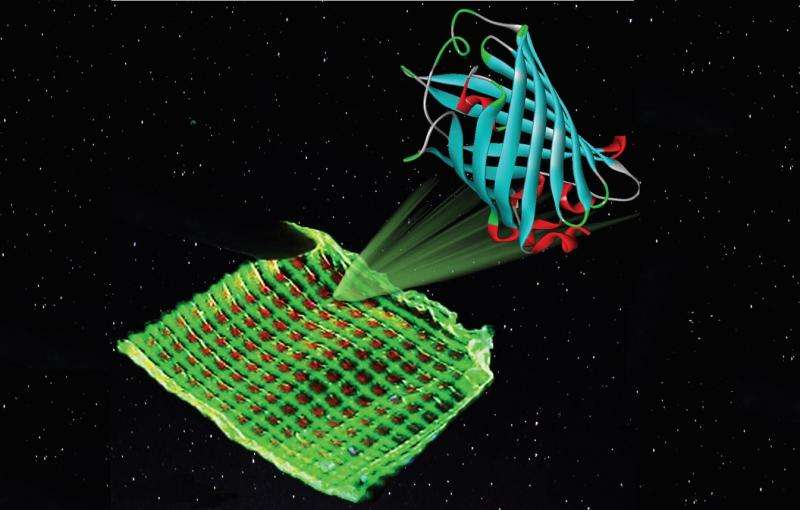Luminescent proteins provide colour to ecological and cheap Bio-displays

Mobile phone, computer and TV displays all use very expensive colour filters and other components that cannot be easily recycled. German and Spanish scientists have designed a new screen, which is cheaper and more ecological as it uses a hybrid material. This material's luminescent proteins can be used in backlighting systems and colour filters made using a 3-D printing technique.
The success of liquid crystal displays (LCDs) used in many portable devices such as telephones, laptops and TVs, is largely due to their use of inorganic white light-emitting diodes (LEDs), which provide exceptional image quality and are energy-efficient.
However, these displays have several inconveniences: the high cost of the colour filters, limited brightness and contrast levels, and the difficulty of recycling materials used to make them.
In response to these problems, a team of scientists at the University of Erlangen-Nurnberg (Germany) led by Rubén D. Costa, from Spain, have designed a new display made of natural elements—luminescent proteins which will enable the manufacturing of these devices ecologically and at a low cost.
Researchers use these proteins in two parts of the display. First, in the display's backlighting, using a Bio-LED featuring white light with different coloured luminescent proteins. A new design in display backlighting, this technology can be used as a substitute for inorganic phosphorous—a rare and expensive material—used in traditional LED displays.
"The proteins have a photoluminescence quantum yield of more than 75 percent. High efficiency is guaranteed," says Costa. In addition, they have a low emission bandwidth (30 to 50 nm), ensuring high colour quality and degradation does not produce significant colour changes."
Details of another protein component, the colour filter, have been published by the scientists in the journal Advanced Functional Materials. Here, the proteins are stored in a polymeric matrix with micrometric resolution using a 3-D printing technique, which enables them to maintain their luminescent properties and optimum stability.
"This colour filter meets the necessary requirement to improve displays currently being used in terms of contrast and brightness, within quality standards demanded across the market," says Costa. "This new material will allow for the development of energy-efficient Bio-displays for TVs and mobile telephones, with low production costs, high image quality and ecological sustainability. Also, these filters are not rigid, allowing them to be used in devices which are flexible and light."
More information: Lukas Niklaus et al. Micropatterned Down-Converting Coating for White Bio-Hybrid Light-Emitting Diodes, Advanced Functional Materials (2017). DOI: 10.1002/adfm.201601792
Journal information: Advanced Functional Materials
Provided by Plataforma SINC




















